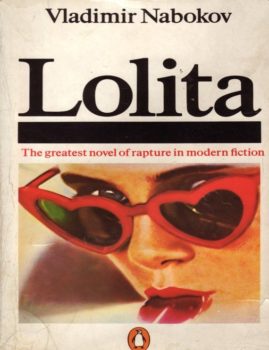[This article first appeared in Night Owl Reviews]

I’m generally of a mind that rules are lame. You don’t know how much trouble I’ve ended up in because of this attitude, being a military member and all. Example:
Me: Why can’t I put my hands in the pockets of my uniform? It’s winter and it’s cold.
Severe-Looking Instructor: Because it’s unprofessional.
Me: Frostbite is also unprofessional.
Severe-Looking Instructor: Drop and give me twenty.
I understand you can’t have a functioning society without rules. My beef is that many rules are arbitrary or unnecessary, or were made because one jerk screwed it up for everybody else, like the guy caught playing pocket pool in front of the general (and now my hands are forever cold, thanks asshole). People often follow rules not because they understand the point of the rule, but because they’re afraid bad things will happen if they don’t follow it.
And writing “rules” are no different. The truth is, any writing rule can be broken and still result in a masterpiece. Check out the works of Cormac McCarthy for proof. The key is understanding the rule, and then knowingly breaking it for a specific reason that enhances your work.
I’ll be brutally honest here—the people who obsess over writing rules and proper grammar are usually themselves terrible writers. They lack insight into why the rules exist to begin with, and that lack of insight often extends to their manuscripts.
So to ensure you don’t have this problem, I’m going to go over the most common misunderstood “rules” of writing.
(FYI – originally I was going to review all these rules at once, but I had so much to say about each rule I decided to tackle them one at a time rather than write a 3,000-word article)
“Rule” 1: Show Don’t Tell
We hear this one all the time. “Don’t tell your readers your character is awesome, show your character being awesome!” “Don’t tell us Billy Joe is sad, show him crying!”
This makes a lot of sense, because an image is worth a thousand words, even one written in words. But let’s get real—you can’t show everything.
Say you’re writing a story about an Irish boy who emigrates to the US in the early 20th century. What good is there in showing the boy on a ship crossing the Atlantic Ocean for weeks? Unless something meaningful happens during the boat trip, it’s okay to just tell the reader the boy spent several weeks on a boat (maybe throw in a detail about how he had to sleep with livestock below deck for color).
When it comes to deciding what to show versus what to tell, the general guideline is this: when relaying factual information, its okay to tell. When relaying characterization or emotionally charged information, it’s better to show.
In mysteries ala Sherlock Holmes and its ilk, you’ll see lots of telling because readers want to follow the clues along with the detective. In romance, you’ll see mostly showing, primarily of characters making googly-eyes at each other. This is to say that genre influences the show/tell ratio, and it’s up to you to strike the right balance per your genre tropes.
(Side note: I once read a review of Vengeance where the reader complained there was too much telling. First I wondered what she was smoking, then I realized the issue is that Vengeance is a romantic suspense build around a complex mystery. As such, the characters often stop to talk about clues and exchange info in their quest to solve the case. But because this reader was in it primarily for the romance, she expected more googly-eye action, hence the charge of “not enough showing.” I’ve since learned to stop reading reviews.)
You can even subvert the Show Don’t Tell rule if you’re a true master of the craft. My favorite example is a passage in Nabokov’s classic novel Lolita, when the main character and anti-hero Humpert Humpert describes his mother’s death early in the novel: “My very photogenic mother died in a freak accident (picnic, lightning) when I was three…” The fact Humpert tells us about the dramatic death of his mother in the least descriptive way possible speaks volumes about his state of mind. This is a guy actively denying reality. The rest of the story bears that out, as the memory of his mother’s death keeps coming up every time he makes a terrible decision that ruins his life and the lives of those around him, despite his insistence the “picnic, lightning” event was NBD.

So you don’t always need to show rather than tell. In fact, it’s impossible to always show; if you try, you’ll end up with a series of moments with no connective tissue or context. You get to decide what to show and what to tell. You’re the master of your own story. Just be sure you know why it’s important to show, before deciding to tell instead.
Stick your hands in your pockets if you want! But be sure you do it because your hands are cold, not to juggle your jewels.
